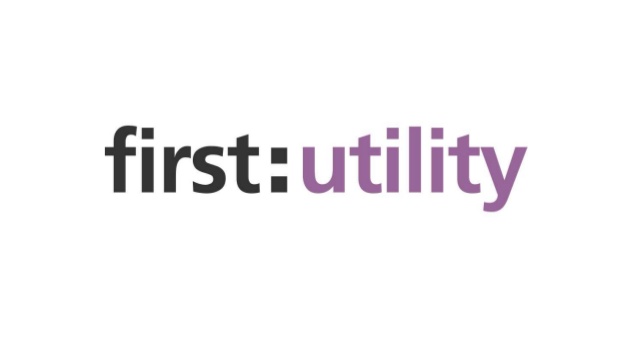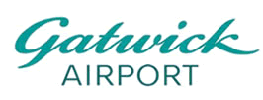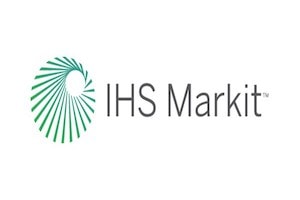Unpacking the True Cost of Drupal: A Transparent Guide for Your Business
Is Drupal truly "free"? This is often the first question businesses ask when considering an enterprise-level content management system, and it's a critical one that deserves a clear, honest answer. At Sirius, we believe in fierce transparency and an objective mentality to help you navigate the complexities of digital solutions. While Drupal, as Open Source software, is indeed free to download and use without direct licensing fees, its implementation, management, and ongoing support for enterprise use involve significant investments. Hiding this information only erodes trust, and our goal is to educate you on the good, the bad, and the ugly of the industry so you can make informed decisions.
Many consumers, and even businesses, often make poor buying decisions because they haven't been educated on what truly drives costs up or down within an industry. This article aims to provide a comprehensive understanding of the Total Cost of Ownership (TCO) for Drupal.
The "Free" Myth vs. Total Cost of Ownership (TCO) Reality
The perception of Drupal being "free" stems from its Open Source nature, meaning no direct licensing fees are required. However, this is a superficial metric. For an enterprise-level deployment, the true financial commitment for Drupal extends far beyond initial acquisition. The cost burden shifts significantly from traditional licensing fees to substantial expenditures in various other areas, transforming it into a comprehensive, long-term service ecosystem.
Total Cost of Ownership (TCO) is a holistic measure that accounts for all direct and indirect costs associated with an asset throughout its entire lifecycle, typically evaluated over a period of five to ten years. Direct costs are quantifiable, including software development, infrastructure, personnel salaries, and licensing fees for tools. Indirect or "hidden costs," often overlooked, can significantly impact profit margins and include productivity loss from downtime, technical debt, employee time for troubleshooting, and compliance efforts. For example, one financial services client discovered they were spending over £38,000 annually just to maintain security compliance for their legacy Drupal 7 infrastructure.
Key Components Influencing Drupal Costs
Rather than simply stating "prices vary," we believe it's crucial to explain why they vary and detail the various factors that increase or decrease costs within the Drupal ecosystem.
1. Development and Implementation Costs
This foundational category encompasses the initial website build and custom functionalities, and costs fluctuate significantly based on project complexity, design intricacy, and required custom features.
- Initial Website Build & Design:
- Basic designs: £1,000 to £5,000.
- Enterprise-level designs with advanced UI/UX and custom graphics: Exceed £20,000 to £100,000+.
- Custom Modules and Themes: Drupal's modularity allows extensive customization, but this translates to higher development costs.
- Custom modules: £500 to £50,000+.
- Bespoke themes: £1,000 to £20,000+.
- Complex API Integrations & Data Migration: Integrating with third-party services and migrating data are significant cost drivers.
- API integrations: £10,000 to £50,000+.
- Developer Expertise & Geography: Labor costs are a major component. Hourly rates vary significantly:
- Global Average: £20 to £200 per hour, with most projects falling between £50-£100.
- Senior Specialists: Can command £60-£120 per hour.
- Regional Differences: A UK-based senior developer might charge £120-£200/hour, while an equally skilled counterpart in Eastern Europe or South Asia could bill £40-£80/hour. Leveraging offshore or nearshore talent can optimize costs but requires managing potential complexities like time zones and communication.
- Project Size:
- Small business websites: £5,000-£20,000.
- Mid-sized corporate websites: £20,000-£75,000.
- Enterprise-level websites: £75,000-£200,000+.
- Large-scale enterprise projects: £150,000 to £1,000,000.
2. Infrastructure and Operational Costs (Hosting)
These are the ongoing expenses for running the Drupal platform.
- Shared Hosting: Most economical at £5-£50 per month, suitable for small, low-traffic sites.
- Cloud Hosting (VPS/Managed Cloud): Offers greater scalability, generally £20-£500+ per month.
- Managed Drupal Hosting (PaaS): Optimized for Drupal, providing enhanced performance, robust security, and dedicated support, often with 24/7 Service Level Agreements (SLAs). Providers like Acquia and Pantheon offer tiered pricing based on pageviews and storage:
- Basic plans: Around £14.95/month (ScalaHosting) to £4.99/month (Cloudclusters.io).
- Advanced managed plans (e.g., Acquia): Starting at £141/month for 100,000 pageviews, scaling to £516/month for 1,000,000 pageviews.
- Pantheon: Median buyer cost of £36,724, with plans from £42/month to £769/month.
- Managed services reduce internal staffing requirements, mitigate operational risks, and provide access to deep technical expertise, transforming unpredictable operational expenditures into predictable, fixed service fees.
3. Maintenance and Upgrade Costs
This covers the continuous effort to keep Drupal secure, performant, and up-to-date.
- Includes regular security updates, core and contributed module updates, bug fixes, performance tuning, and migrations between major Drupal versions (e.g., Drupal 8/9 to Drupal 10).
- Delaying updates and migrations leads to "technical debt," increasing security risks and making future updates more expensive and challenging. Proactive maintenance is a critical cost-saving and risk-mitigation strategy.
4. Support and Customer Service Costs
These costs are for expert assistance, troubleshooting, and guaranteed response times.
- Monthly Plans: Ranging from basic proactive maintenance (e.g., £99/month from Drupal Aid) to comprehensive plans offering unlimited support (£299/month).
- Drupal 7 Long-Term Support (LTS): Specialized plans from £350-£650/month (Drupal Aid) after community support ends.
- Hourly Rates for On-Demand/Emergency: Vary from £32-£50/hour for one-time plans to £39/hour for 24/7 on-demand support.
5. Security and Compliance Measures
Dedicated security setups, vulnerability management, and adherence to regulatory standards (e.g., GDPR, HIPAA) are crucial. Enterprise security solutions can cost £10,000 to £50,000+ per year.
6. Training and Personnel Development
Investing in internal team skills is vital for effective Drupal management. A typical five-day comprehensive Drupal developer course can cost £1,995 for a minimum of two persons.
Integrating Advanced Search: Apache Solr Costs
For enterprise Drupal implementations, particularly those with e-commerce or extensive content, integrating a powerful search solution like Apache Solr is essential. Solr is an Open Source, enterprise-grade search platform built on Apache Lucene, known for scalability, full-text search, and real-time indexing.
- Self-Managed Solr: Incurs significant direct and indirect costs, including:
- Infrastructure: Servers, RAM (at least 50% for Solr), high-performance SSDs, network bandwidth, power, and cooling.
- Personnel: Specialized in-house DevOps and Site Reliability Engineers (SREs) for complex setup, configuration, cluster management, and performance tuning. Managing an Apache ZooKeeper ensemble (typically 3-5 nodes) for coordination is also critical.
- Operational Overhead: Manual configuration, security patches, and troubleshooting fall on the internal team.
- Managed Solr Services (SaaS): These solutions offload infrastructure management to specialized vendors, offering cloud automation, high availability, monitoring, disaster recovery, and security.
- Pricing is typically tiered based on data size, search volumes, and SLAs. Examples include EdgeHosting (from £60/month for 20,000 documents to £1,800+/month for over 1 million) and WebSolr (from £59/month to £2,999/month for enterprise plans).
- Sirius provides managed services that encompass Solr systems as part of a broader digital estate, enabling seamless integration within your existing Sirius-managed Drupal environment.
Sirius: Your Partner for Drupal Investment
At Sirius, we understand that navigating Drupal's costs requires expertise and a long-term strategic view. We position ourselves as a core technology partner for Drupal, offering a comprehensive suite of services:
- Strategic Consultancy: Helping clients identify optimal opportunities and maximize benefits from Drupal.
- Deployment and Systems Integration: Expertly designing, building, and integrating complex Drupal systems, including with other critical technologies like Apache Solr/Elastic Search, Varnish, and MySQL (or PostgreSQL/other OSS databases).
- Training: Providing in-depth knowledge transfer to empower client teams.
- Support: Offering specialized, continuous backing for Drupal, including enterprise-savvy, real-world support for Drupal 7 to Drupal 11 sites, patches, upgrades, code fixes, and custom development.
- Managed Service: Taking full responsibility for the management of Drupal systems to deliver solutions precisely meeting client technological requirements.
By partnering with Sirius for managed services and specialized support, businesses can transform unpredictable operational expenditures into predictable, fixed service fees, ensuring stability, optimal performance, and robust security. This allows internal teams to concentrate on core business innovation and value-added projects instead of infrastructure management, ultimately aiming for a lower Total Cost of Ownership.
Strategic Recommendations for Cost Optimization
Optimizing Drupal and Solr costs requires a proactive approach.
- Prioritize Managed Services for Core Infrastructure: Especially without extensive in-house expertise, managed services offload complexity, reduce overhead, and provide predictable costs.
- Invest Proactively in Maintenance and Upgrades: Regular maintenance and planned upgrades mitigate technical debt, security vulnerabilities, and higher future remediation costs.
- Strategic Sourcing of Talent: Leverage global talent pools through offshore or nearshore outsourcing for comparable quality at lower hourly rates.
- Optimize Resource Utilization: Regularly audit infrastructure and Solr configurations to right-size resources and eliminate waste, including fine-tuning caching and indexing, and implementing auto-scaling.
- Leverage Open Source Ecosystem Wisely: Evaluate long-term implications of extensive custom development. Prioritize modules that align with standard practices and have active community support to avoid significant ongoing maintenance efforts and costs.
- Implement Robust Monitoring and Alerting: Critical for early detection and resolution of performance bottlenecks and security issues for both Drupal and Solr.
- Define Clear Requirements and Scope: Thorough planning minimizes unexpected costs and prevents scope creep, aligning development with business objectives for predictable expenditures and successful outcomes.
Conclusion
Navigating the Drupal market effectively means looking beyond the "free" Open Source label and understanding the comprehensive Total Cost of Ownership. While Drupal offers unparalleled flexibility and scalability, its true cost lies in the ecosystem of development, infrastructure, maintenance, and support.
Sirius is committed to empowering your business with deep, unbiased explanations and transparent pricing models, ensuring you attract more qualified opportunities and avoid being scared away by hidden costs. By understanding these costs and strategically partnering with experts like Sirius, you can transform Drupal and Solr discussions from points of friction into powerful tools for building trust, educating your team, and achieving sustainable growth.
















































